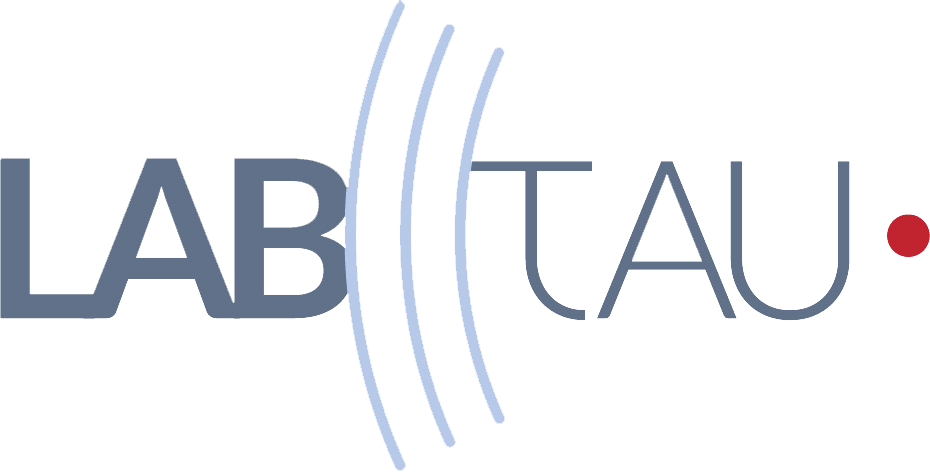Thesis by BOUCHOUX Guillaume
Dual-Mode Transducers for Image-Guided Therapy.
Defended on 5 december 2007
An ultrasound transducer able to perform both imaging and therapy allows an optimal point of view for monitoring and minimizes space requirement. A short impulse response enables good quality imaging. For therapy, a high acoustic intensity is emitted. An electro-acoustic model and an associated optimization algorithm were set up. A thermal model allows a deeper study of the therapy mode. A structure including a piezocomposite layer, an air backing, an acoustic matching layer and an electric matching circuit was determined using the models. The structure was validated for both modes by experimental measurements on prototypes. A single element interstitial probe based on this technology was built. Several imaging methods and therapeutic strategies were tested in vitro. The results were similar to those described in literature, obtained with two separate transducers. The feasibility of a dual-mode array was then investigated. Cofired multilayer piezoelectric ceramic allows a good electric matching. This was demonstrated by simulations and measurements on a prototype. Therapy and imaging were also tested, and good results were obtained.
Transducteurs ultrasonores bi-mode pour la thérapie et l’imagerie.
Soutenue le 5 December 2007
Un transducteur combinant imagerie et thérapie donne un encombrement minimum et un point de vue optimal pour le monitoring. Une réponse impulsionnelle courte assure la qualité des images. En thérapie, une intensité acoustique élevée doit être émise. Un modèle électroacoustique a été mis en place et un algorithme d’optimisation lui a été associé. Un modèle thermique permet l’étude du mode thérapie. Une structure comprenant une couche piézocomposite, un backing air, une lame d’adaptation acoustique et un circuit d’adaptation électrique a été mise au point à l’aide de ces outils. Elle a été validée par la caractérisation de prototypes. Une sonde monoélément interstitielle a été construite. Plusieurs méthodes d’imagerie ont été testées. Des expériences in-vitro ont donné des résultats similaires à ceux obtenus avec deux transducteurs dans la littérature. Enfin, la faisabilité d’un réseau bi-mode a été étudiée. L’emploi de céramique multicouche cofrittée donne une impédance électrique adaptable efficacement. Cela a été validé par la caractérisation d’un prototype. Des premiers essais en puissance et en imagerie ont été effectués avec ce réseau.
Defended on 5 december 2007
An ultrasound transducer able to perform both imaging and therapy allows an optimal point of view for monitoring and minimizes space requirement. A short impulse response enables good quality imaging. For therapy, a high acoustic intensity is emitted. An electro-acoustic model and an associated optimization algorithm were set up. A thermal model allows a deeper study of the therapy mode. A structure including a piezocomposite layer, an air backing, an acoustic matching layer and an electric matching circuit was determined using the models. The structure was validated for both modes by experimental measurements on prototypes. A single element interstitial probe based on this technology was built. Several imaging methods and therapeutic strategies were tested in vitro. The results were similar to those described in literature, obtained with two separate transducers. The feasibility of a dual-mode array was then investigated. Cofired multilayer piezoelectric ceramic allows a good electric matching. This was demonstrated by simulations and measurements on a prototype. Therapy and imaging were also tested, and good results were obtained.
Transducteurs ultrasonores bi-mode pour la thérapie et l’imagerie.
Soutenue le 5 December 2007
Un transducteur combinant imagerie et thérapie donne un encombrement minimum et un point de vue optimal pour le monitoring. Une réponse impulsionnelle courte assure la qualité des images. En thérapie, une intensité acoustique élevée doit être émise. Un modèle électroacoustique a été mis en place et un algorithme d’optimisation lui a été associé. Un modèle thermique permet l’étude du mode thérapie. Une structure comprenant une couche piézocomposite, un backing air, une lame d’adaptation acoustique et un circuit d’adaptation électrique a été mise au point à l’aide de ces outils. Elle a été validée par la caractérisation de prototypes. Une sonde monoélément interstitielle a été construite. Plusieurs méthodes d’imagerie ont été testées. Des expériences in-vitro ont donné des résultats similaires à ceux obtenus avec deux transducteurs dans la littérature. Enfin, la faisabilité d’un réseau bi-mode a été étudiée. L’emploi de céramique multicouche cofrittée donne une impédance électrique adaptable efficacement. Cela a été validé par la caractérisation d’un prototype. Des premiers essais en puissance et en imagerie ont été effectués avec ce réseau.




